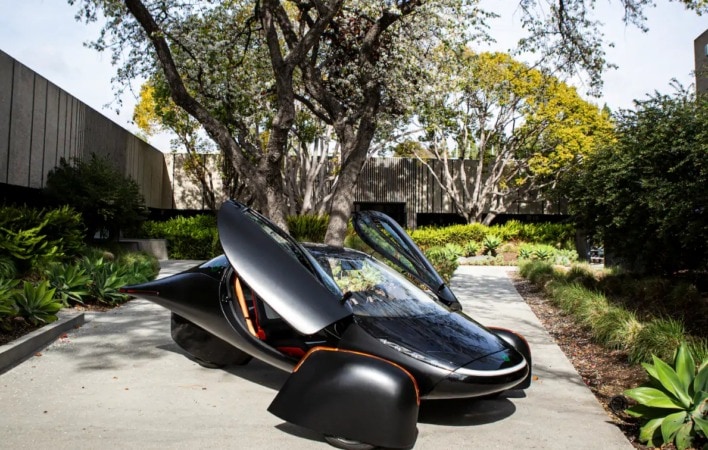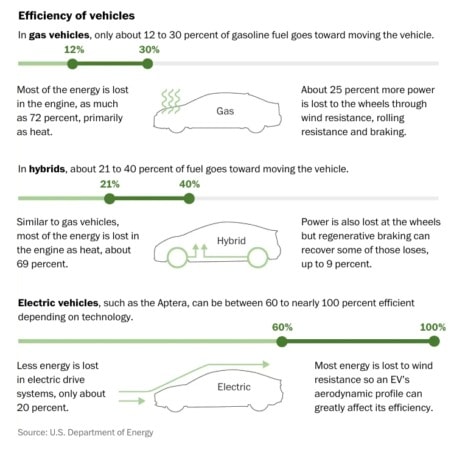
The dream began in 1955, with a tiny, toylike creation called the “Sunmobile.” Built from balsa wood and hobby shop tires, it was just 15 inches long. The 12 selenium solar cells that decorated its exterior produced less horsepower than an actual horse. But it was proof of a concept: Sunlight alone can make a vehicle run.
The years went on, and the dream evolved into a converted vintage buggy with solar panels on its roof. Then a glorified bicycle, a retiree’s garage project, a racecar that crossed the Mojave Desert at 51 miles per hour.

It is a dream of perpetual motion. Of travel that doesn’t do damage to the planet. Of journeys that last as long as the sun shines.
There are problems with this dream, big ones. Clouds come. Night falls. The laws of physics limit how efficiently solar […]











What happened to the energy lost generating and distributing the electrical power to the EV? If it is from a conventional power plant at least 50% will be lost before it ever reaches the EV. This type of flawed and misleading article hurts the credibility of environmental activists and gives credibility to the anti EV crowd.
There must be in place electric plug-ins for the creation to be viable and that could cost a lot of money in itself.
To me, the hybrid has a lot of plusses. One being it makes use of energy wasted through braking and can do power smoothing for the internal combustion motor keeping it in a more optimum and efficient power range. The latest internal combustion motors can be quite efficient and clean burning. While we are still generating most of our power with fossil fuels, optimizing its use with currently available technology could have a significant impact on green house emissions.
I think the old “Model T” ford which was I believe the first mass production automobile, was very light and went slow but used probably less gasoline and therefor produced less CO2 emissions than these new hybrids use to get there power. I would rather have an old Model T than any of these new cars which are coming out now.